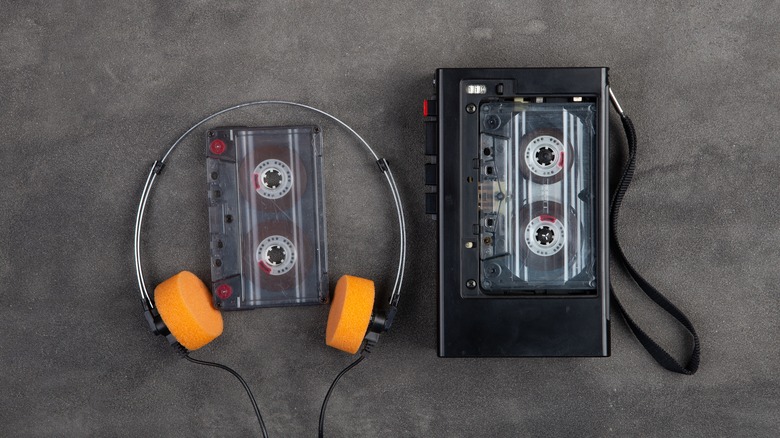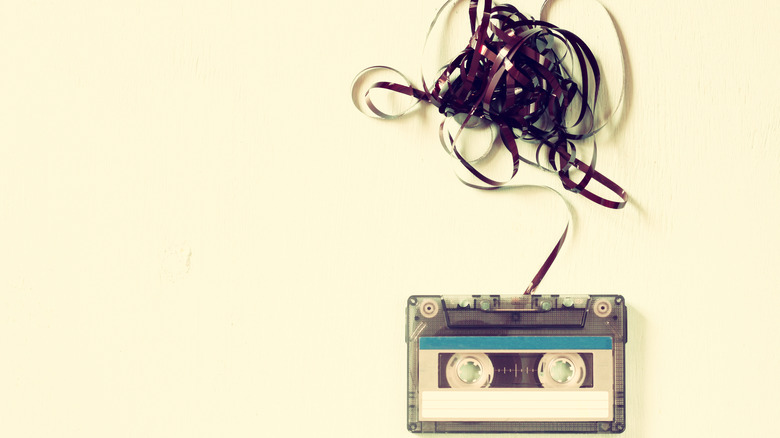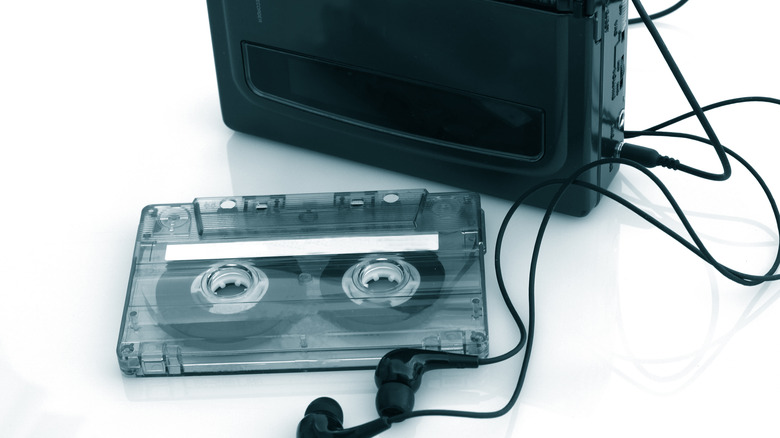The Reason Cassette Tapes Are Making A Big Comeback
Nostalgia for the 1980s and 1990s is pretty strong these days, possibly due to the success of shows like "Stranger Things." The latest evidence that we're heading back to the era of Don Johnson, Saturday morning cartoons, and regrettable "Rocky" sequels is the seemingly amazing revival of the cassette tape.
Artists like Billie Eilish and Taylor Swift seem to be spearheading the re-adoption of this retro format. Swift's 2022 release "Midnights" was available on cassette, alongside a CD and vinyl release. Eilish's fans were also able to grab "Happier Than Ever" on tape, and many did so despite the fact that the format phased into obsolescence before many of them were born. Sales have picked up drastically over the past few years. In 2015, the format was still in a steady decline, with only 81,000 tapes sold in the United States, according to statistics from Billboard. Last year, people purchased 440,000.
Other musicians have seemingly hopped on the hype wave too, with Lady Gaga, The Weeknd, and Maren Morris also releasing music on the revived format. Add to this the plethora of little indie bands that never abandoned the cassette to start with, reissues of classic tapes from the likes of 2Pac, Snoop Dogg, and Dr. Dre, and the endless list of legendary musicians who were releasing tapes in their prime, and there is definitely a huge amount of media available for enthusiasts to dive into — or there should be, anyway. Here is why the once-forgotten cassette tape is making a comeback.
What are cassette tapes?
As far as media storage mediums go, the cassette is a pretty old format. It's been around for close to 60 years, it was invented by electronics giant Philips, and it was immensely popular for several decades. Even after CDs, and even MP3s, had begun to dominate the market, the cassette still held on — mainly due to drivers of older vehicles only having a cassette player in their cars. They were also fairly easy to find at flea markets, garage sales, and in the dark, damp corners of thrift stores.
A cassette is basically a smaller 8-track, working in the same way as both that ancient format and the VHS. Data is written onto and read from a magnetic ribbon wound between two reels. While it is being wound one way or another, an exposed part is read by a cassette player. This design has a couple of benefits, one of which is the ability to record sound onto both sides of the "tape." Like vinyl, tapes had an A-side and a B-side, which meant you could record twice the amount of data on one, and were able to flip it over and play something else instead of having to rewind it each time.
Of course, tapes had some downsides, too. There's always a chance the cassette player you were using could have a bad day and decide to eat your favorite album. This would clog up the player and more than likely destroy your cassette. The quality wasn't great either, especially when compared to CDs or MP3s.
Tapes are proving a bit hard to get
The past few years have certainly produced plenty of shocks, and the revival of the cassette is among them. No one predicted the obsolete format would be desirable a couple of decades after it seemingly died off, and now manufacturers and music stores are struggling to meet demand.
Some manufacturers are attempting to capitalize on the unexpected revival by purchasing and reconditioning older machines in an effort to up their output. There are many companies whose main source of income comes from making cassettes, and this boom in the industry is undoubtedly welcome. The industry's surviving bigger names include National Audio Company, Enas Media, and RTM.
For a while, tapes were a bit like floppy disks. Their mainstream appeal had long gone, mainly due to technological advancements like MP3 players and, subsequently, music streaming serving the same purpose but more conveniently and with a higher-quality end product. So the cassette was reduced to niche applications — such as becoming a medium for instructional and religious materials, as well as a fair number going to the government for archival reasons.
The revival technically began in 2006, when hipsters were doing quirky hipster things like issuing tapes on the indie music scene. This latest wave is an even bigger boom for the cassette industry. As things stand, it's unclear if the renewed interest in tapes is just a fad or if the 60-year-old medium still has a few decades left in it.


